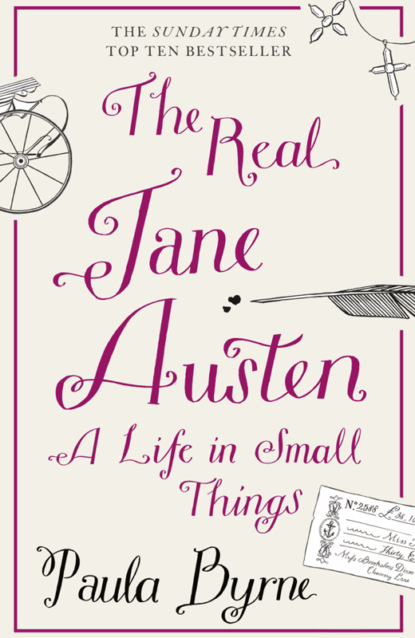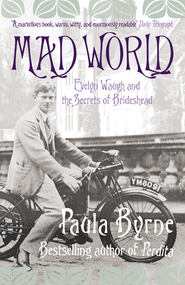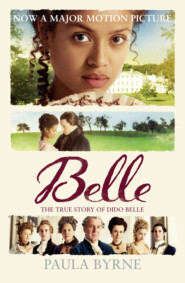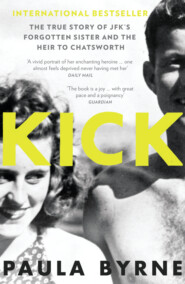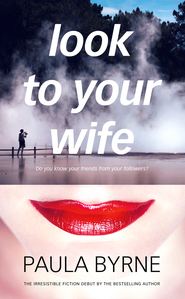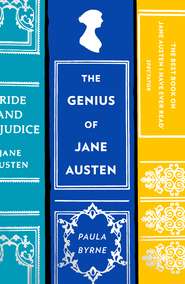По всем вопросам обращайтесь на: info@litportal.ru
(©) 2003-2024.
✖
The Real Jane Austen: A Life in Small Things
Настройки чтения
Размер шрифта
Высота строк
Поля
The Real Jane Austen: A Life in Small Things
Paula Byrne
Who was the real Jane Austen? A spinster who sat in a vicarage confining her novels to the small canvas of village life? Or a woman who knew the turbulent world around her and who took the bold decision to remain unmarried and fashion herself as a professional writer?In this new biography, best-selling author Paula Byrne (Perdita, Mad World) explores the forces that shaped the interior life of Britain’s most beloved novelist: her father’s religious faith, her mother’s aristocratic pedigree, her eldest brother’s adoption, her other brothers’ naval and military experiences, her relatives in the East and West Indies, her cousin who lived through the trauma of the French Revolution, the family’s amateur theatricals, the female novelists she admired, her residence in Bath, her love of the seaside, her travels around England and her long struggle to become a published author.Byrne uses a highly innovative technique whereby each chapter begins from an object that conjures up a key moment or theme in Austen’s life and work—a silhouette, a vellum notebook, a topaz cross, a laptop writing box, a royalty cheque, a bathing machine, and many more.The woman who emerges is far tougher, more socially and politically aware, and altogether more modern than the conventional picture of ‘dear Aunt Jane’ would allow. Published to coincide with the bicentenary of Pride and Prejudice, this lively and scholarly biography brings Austen dazzlingly into the twenty-first century.
Dedication (#ulink_a40116bd-a485-51fe-aa91-c69894adb726)
For my very own Elinor (Ellie)
Epigraph (#ulink_354e63e9-2eea-5584-92cb-0c4206e277e2)
The room was most dear to her, and she would not have changed its furniture for the handsomest in the house, though what had been originally plain, had suffered all the ill-usage of children – and its greatest elegancies and ornaments were a faded footstool of Julia’s work, too ill done for the drawing-room, three transparencies, made in a rage for transparencies, for the three lower panes of one window, where Tintern Abbey held its station between a cave in Italy, and a moonlight lake in Cumberland; a collection of family profiles, thought unworthy of being anywhere else, over the mantelpiece, and by their side, and pinned against the wall, a small sketch of a ship sent four years ago from the Mediterranean by William, with H.M.S. Antwerp at the bottom, in letters as tall as the main-mast.
Mansfield Park, vol 1, ch. 16
[S]he seized the scrap of paper … locked it up with the chain, as the dearest part of the gift. It was the only thing approaching to a letter which she had ever received from him; she might never receive another; it was impossible that she ever should receive another so perfectly gratifying in the occasion and the style. Two lines more prized had never fallen from the pen of the most distinguished author – never more completely blessed the researches of the fondest biographer. The enthusiasm of a woman’s love is even beyond the biographer’s.
Mansfield Park, vol 2, ch. 9
Contents
Title Page (#ud74ee3b7-73a0-59b3-ac3d-001c636b7dff)
Dedication (#ulink_31aa13c8-648e-5431-9724-75cf3c7b269c)
Epigraph (#ulink_a4481a31-39e9-59f1-96d3-7e1ba5571cc8)
Author’s Note (#ulink_00042ca8-d8b5-5a8e-bd1e-7703907ff9cb)
Prologue: Captain Harville’s Carpentry (#ulink_20523ae2-a059-524e-8519-08e336637db4)
1. The Family Profile (#ulink_092dd7d4-6ce4-5913-95ac-86d7a203894b)
2. The East Indian Shawl (#ulink_5a9516b3-046c-5cae-a8ab-a73738523d4e)
3. The Vellum Notebooks (#ulink_ea440869-5c05-5841-99ae-7adf723b8a83)
4. The Subscription List (#ulink_b0da8ca5-908e-53a0-8b23-6418ff79741e)
5. The Sisters (#litres_trial_promo)
6. The Barouche (#litres_trial_promo)
7. The Cocked Hat (#litres_trial_promo)
8. The Theatrical Scenes (#litres_trial_promo)
9. The Card of Lace (#litres_trial_promo)
10. The Marriage Banns (#litres_trial_promo)
11. The Ivory Miniature (#litres_trial_promo)
12. The Daughter of Mansfield (#litres_trial_promo)
13. The Crimson Velvet Cushions (#litres_trial_promo)
14. The Topaz Crosses (#litres_trial_promo)
15. The Box of Letters (#litres_trial_promo)
16. The Laptop (#litres_trial_promo)
17. The Royalty Cheque (#litres_trial_promo)
18. The Bathing Machine (#litres_trial_promo)
Epilogue (#litres_trial_promo)
Picture Credits (#litres_trial_promo)
Notes (#litres_trial_promo)
Index (#litres_trial_promo)
Acknowledgments (#litres_trial_promo)
Also by Paula Byrne (#litres_trial_promo)
Copyright (#litres_trial_promo)
About the Publisher
Author’s Note (#ulink_75a4eff1-a787-5c11-b916-6903086ec58f)
Each chapter begins with a description of the image that sets its theme. Jane Austen’s novels are quoted from the Oxford World’s Classics editions, but references in the endnotes take the form of volume and chapter number, so as to make it possible to locate the relevant passage in other editions. So, for example, 1.8 means chapter 8 of volume 1 (Persuasion and Northanger Abbey were each originally published in two volumes, the other four completed novels each in three volumes). The irregular spellings in Austen’s letters and youthful writings are retained (most famously, ‘Love and Freindship’, but also ‘beleive’, ‘neice’, ‘Lime’ for Lyme, ‘Keen’ for the actor Kean, and so on). The endnotes also acknowledge, at relevant points, the work of the many wonderful Jane Austen scholars on whom I have drawn.
In order to give readers an idea of monetary values – whether for the cost of a card of lace or the worth of Jane Austen’s royalty cheque – I have given 2011 equivalents derived from the Bank of England’s online historical inflation calculator (and with a dollar equivalent on the rough basis of $1.50 to a pound). It must, however, be remembered that these are merely indicative sums: over the centuries inflation has been much greater for some things than others.
PROLOGUE (#ulink_b67c24ce-0995-5df1-bb87-12adadef58d3)
Captain Harville’s Carpentry (#ulink_b67c24ce-0995-5df1-bb87-12adadef58d3)
This is a watercolour of Lyme Regis on the southern coast of England. The cottages nestle on the hillside. An old stone breakwater leads down to the shoreline. A man and a woman are walking on the beach and a solitary figure is looking out to sea. A rowing boat is on its way out to a ship at anchor in the bay. The eye is drawn to an expansive view of sloping cliffs and open sky.1 (#litres_trial_promo)
Jane Austen loved the sea. The story goes that when her father announced in December 1800 that he was leaving his position as rector of the parish of Steventon and retiring to Bath, she was so shocked that she fainted. She reconciled herself to the move only when the family promised to take a holiday by the seaside every summer. In 1801 and 1802 they went to Sidmouth and Teignmouth in Devon. In 1803 and 1804 it was the turn of Lyme Regis.
‘The young people were all wild to see Lyme.’ When they arrive, in chapter eleven of Persuasion, Jane Austen describes the little seaside resort in the style of a tour guide: the pleasant bay, the new-fangled bathing machines, the famous Cobb, the beautiful line of cliffs stretching out to the east of the town, the charms of ‘the immediate environs’ – the high sweep of countryside around Charmouth, ‘the woody varieties of the cheerful village of Up Lyme, and, above all, Pinny, with its green chasms between romantic rocks … a scene so wonderful and so lovely is exhibited, as may more than equal any of the resembling scenes of the far-famed Isle of Wight’.2 (#litres_trial_promo)
‘These places must be visited, and visited again to make the worth of Lyme understood,’ Jane Austen tells her readers. She had visited Lyme at least twice, on one occasion witnessing a fire that destroyed a number of houses. When she describes the place in her novel, she is visiting it yet again, this time in her imagination. Her description is the literary equivalent of the engravings of popular tourist sites that were readily obtainable in the burgeoning print market of the age – the Regency version of the picture postcard.
Paula Byrne
Who was the real Jane Austen? A spinster who sat in a vicarage confining her novels to the small canvas of village life? Or a woman who knew the turbulent world around her and who took the bold decision to remain unmarried and fashion herself as a professional writer?In this new biography, best-selling author Paula Byrne (Perdita, Mad World) explores the forces that shaped the interior life of Britain’s most beloved novelist: her father’s religious faith, her mother’s aristocratic pedigree, her eldest brother’s adoption, her other brothers’ naval and military experiences, her relatives in the East and West Indies, her cousin who lived through the trauma of the French Revolution, the family’s amateur theatricals, the female novelists she admired, her residence in Bath, her love of the seaside, her travels around England and her long struggle to become a published author.Byrne uses a highly innovative technique whereby each chapter begins from an object that conjures up a key moment or theme in Austen’s life and work—a silhouette, a vellum notebook, a topaz cross, a laptop writing box, a royalty cheque, a bathing machine, and many more.The woman who emerges is far tougher, more socially and politically aware, and altogether more modern than the conventional picture of ‘dear Aunt Jane’ would allow. Published to coincide with the bicentenary of Pride and Prejudice, this lively and scholarly biography brings Austen dazzlingly into the twenty-first century.
Dedication (#ulink_a40116bd-a485-51fe-aa91-c69894adb726)
For my very own Elinor (Ellie)
Epigraph (#ulink_354e63e9-2eea-5584-92cb-0c4206e277e2)
The room was most dear to her, and she would not have changed its furniture for the handsomest in the house, though what had been originally plain, had suffered all the ill-usage of children – and its greatest elegancies and ornaments were a faded footstool of Julia’s work, too ill done for the drawing-room, three transparencies, made in a rage for transparencies, for the three lower panes of one window, where Tintern Abbey held its station between a cave in Italy, and a moonlight lake in Cumberland; a collection of family profiles, thought unworthy of being anywhere else, over the mantelpiece, and by their side, and pinned against the wall, a small sketch of a ship sent four years ago from the Mediterranean by William, with H.M.S. Antwerp at the bottom, in letters as tall as the main-mast.
Mansfield Park, vol 1, ch. 16
[S]he seized the scrap of paper … locked it up with the chain, as the dearest part of the gift. It was the only thing approaching to a letter which she had ever received from him; she might never receive another; it was impossible that she ever should receive another so perfectly gratifying in the occasion and the style. Two lines more prized had never fallen from the pen of the most distinguished author – never more completely blessed the researches of the fondest biographer. The enthusiasm of a woman’s love is even beyond the biographer’s.
Mansfield Park, vol 2, ch. 9
Contents
Title Page (#ud74ee3b7-73a0-59b3-ac3d-001c636b7dff)
Dedication (#ulink_31aa13c8-648e-5431-9724-75cf3c7b269c)
Epigraph (#ulink_a4481a31-39e9-59f1-96d3-7e1ba5571cc8)
Author’s Note (#ulink_00042ca8-d8b5-5a8e-bd1e-7703907ff9cb)
Prologue: Captain Harville’s Carpentry (#ulink_20523ae2-a059-524e-8519-08e336637db4)
1. The Family Profile (#ulink_092dd7d4-6ce4-5913-95ac-86d7a203894b)
2. The East Indian Shawl (#ulink_5a9516b3-046c-5cae-a8ab-a73738523d4e)
3. The Vellum Notebooks (#ulink_ea440869-5c05-5841-99ae-7adf723b8a83)
4. The Subscription List (#ulink_b0da8ca5-908e-53a0-8b23-6418ff79741e)
5. The Sisters (#litres_trial_promo)
6. The Barouche (#litres_trial_promo)
7. The Cocked Hat (#litres_trial_promo)
8. The Theatrical Scenes (#litres_trial_promo)
9. The Card of Lace (#litres_trial_promo)
10. The Marriage Banns (#litres_trial_promo)
11. The Ivory Miniature (#litres_trial_promo)
12. The Daughter of Mansfield (#litres_trial_promo)
13. The Crimson Velvet Cushions (#litres_trial_promo)
14. The Topaz Crosses (#litres_trial_promo)
15. The Box of Letters (#litres_trial_promo)
16. The Laptop (#litres_trial_promo)
17. The Royalty Cheque (#litres_trial_promo)
18. The Bathing Machine (#litres_trial_promo)
Epilogue (#litres_trial_promo)
Picture Credits (#litres_trial_promo)
Notes (#litres_trial_promo)
Index (#litres_trial_promo)
Acknowledgments (#litres_trial_promo)
Also by Paula Byrne (#litres_trial_promo)
Copyright (#litres_trial_promo)
About the Publisher
Author’s Note (#ulink_75a4eff1-a787-5c11-b916-6903086ec58f)
Each chapter begins with a description of the image that sets its theme. Jane Austen’s novels are quoted from the Oxford World’s Classics editions, but references in the endnotes take the form of volume and chapter number, so as to make it possible to locate the relevant passage in other editions. So, for example, 1.8 means chapter 8 of volume 1 (Persuasion and Northanger Abbey were each originally published in two volumes, the other four completed novels each in three volumes). The irregular spellings in Austen’s letters and youthful writings are retained (most famously, ‘Love and Freindship’, but also ‘beleive’, ‘neice’, ‘Lime’ for Lyme, ‘Keen’ for the actor Kean, and so on). The endnotes also acknowledge, at relevant points, the work of the many wonderful Jane Austen scholars on whom I have drawn.
In order to give readers an idea of monetary values – whether for the cost of a card of lace or the worth of Jane Austen’s royalty cheque – I have given 2011 equivalents derived from the Bank of England’s online historical inflation calculator (and with a dollar equivalent on the rough basis of $1.50 to a pound). It must, however, be remembered that these are merely indicative sums: over the centuries inflation has been much greater for some things than others.
PROLOGUE (#ulink_b67c24ce-0995-5df1-bb87-12adadef58d3)
Captain Harville’s Carpentry (#ulink_b67c24ce-0995-5df1-bb87-12adadef58d3)
This is a watercolour of Lyme Regis on the southern coast of England. The cottages nestle on the hillside. An old stone breakwater leads down to the shoreline. A man and a woman are walking on the beach and a solitary figure is looking out to sea. A rowing boat is on its way out to a ship at anchor in the bay. The eye is drawn to an expansive view of sloping cliffs and open sky.1 (#litres_trial_promo)
Jane Austen loved the sea. The story goes that when her father announced in December 1800 that he was leaving his position as rector of the parish of Steventon and retiring to Bath, she was so shocked that she fainted. She reconciled herself to the move only when the family promised to take a holiday by the seaside every summer. In 1801 and 1802 they went to Sidmouth and Teignmouth in Devon. In 1803 and 1804 it was the turn of Lyme Regis.
‘The young people were all wild to see Lyme.’ When they arrive, in chapter eleven of Persuasion, Jane Austen describes the little seaside resort in the style of a tour guide: the pleasant bay, the new-fangled bathing machines, the famous Cobb, the beautiful line of cliffs stretching out to the east of the town, the charms of ‘the immediate environs’ – the high sweep of countryside around Charmouth, ‘the woody varieties of the cheerful village of Up Lyme, and, above all, Pinny, with its green chasms between romantic rocks … a scene so wonderful and so lovely is exhibited, as may more than equal any of the resembling scenes of the far-famed Isle of Wight’.2 (#litres_trial_promo)
‘These places must be visited, and visited again to make the worth of Lyme understood,’ Jane Austen tells her readers. She had visited Lyme at least twice, on one occasion witnessing a fire that destroyed a number of houses. When she describes the place in her novel, she is visiting it yet again, this time in her imagination. Her description is the literary equivalent of the engravings of popular tourist sites that were readily obtainable in the burgeoning print market of the age – the Regency version of the picture postcard.





